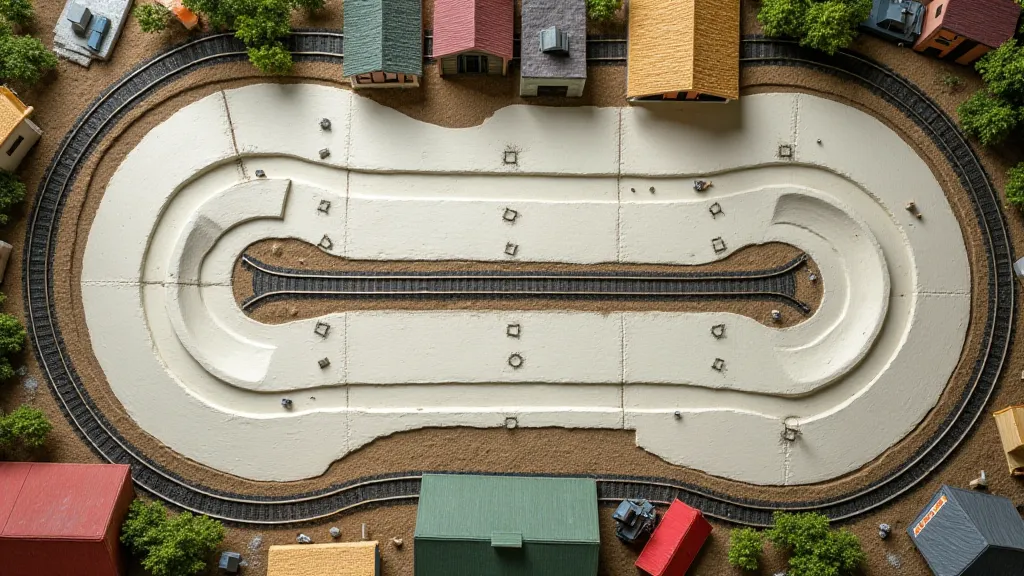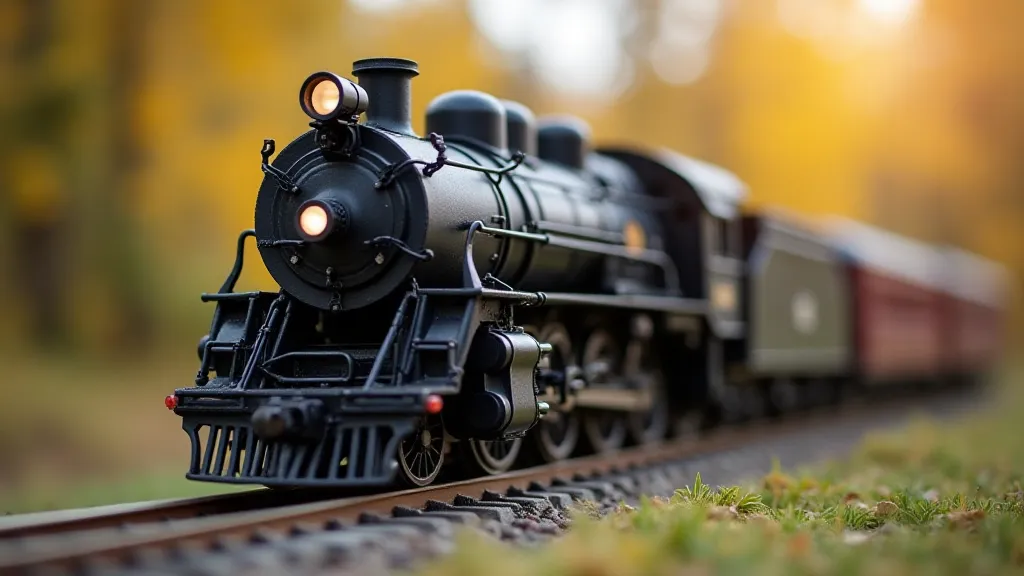The Clockmaker’s Gears: Optimizing Your N Scale Track System for Reliability
There’s a quiet beauty in things meticulously crafted. Think of a Swiss music box, the tiny hammers striking delicate chimes, or an antique accordion – a breathing sculpture of bellows, reeds, and buttons. The complexity, the precision, the feeling that decades of skill and patience have poured into its creation. My grandfather collected accordions. Not just any accordions, mind you, but instruments rescued from attics and antique shops, each whispering a forgotten melody. He’s the one who instilled in me an appreciation for the intricate workings of things, a fascination with how seemingly small components, working in perfect harmony, could create something truly remarkable. That same principle applies, perhaps even more acutely, to N scale model railroading, particularly when it comes to the often-underappreciated realm of track planning and reliability.
N scale, with its diminutive size, presents unique challenges. While the compactness is a huge draw – allowing for sprawling landscapes within a relatively small footprint – it also amplifies the impact of even the smallest imperfections. A slightly misaligned frog, a barely perceptible kink in the rail, a speck of dust – any of these can disrupt the smooth flow of your miniature trains, leading to derailments and frustration. It’s a microcosm of engineering; a tiny world where precision is paramount.

The Nuances of N Scale Track Planning
Unlike larger scales like HO or O, N scale trackwork demands a different level of scrutiny. The tolerances are tighter, and the margin for error is smaller. A slight curvature, barely noticeable to the naked eye, can translate to a significant derailment in N scale. Track planning isn’t just about laying down straight lines and curves; it’s about anticipating potential problem areas and proactively addressing them. This means more than just following a plan; it means understanding the underlying principles of track geometry and how they affect train operation.
One of the most common pitfalls in N scale is relying solely on pre-fabricated track sections. While these are convenient, they are often manufactured with a degree of variability that can compound over a long run of track. The cumulative effect of these minor imperfections can be disastrous. A better approach is to meticulously inspect each section of track, individually, before laying it down. Use a straightedge and a level to ensure perfect alignment. Consider using track laying tools specifically designed for N scale, which can help compensate for minor imperfections in the sub-base.
Beyond Straight Lines: Mastering Curves and Turnouts
Curves, a necessary element in almost any layout, pose a particular challenge. N scale trains, being smaller and lighter, are more susceptible to the effects of flange climb – the tendency of the wheels to ride up the inside of the curve. To minimize flange climb, it's crucial to use the widest possible radius curves your space allows. This is often a compromise, but it's a trade-off that dramatically improves reliability. Experimenting with different curve radii is invaluable; observe how your locomotives handle each radius and adjust accordingly.
Turnouts, or switches, are another critical area for attention. The delicate mechanisms of N scale turnouts are prone to binding and misalignment. Regular cleaning and lubrication are essential for maintaining smooth operation. Use a track cleaning solution and a fine-tipped oil to keep the points and frogs free of dirt and grime. Avoid over-oiling, as this can attract dirt and create further problems. Consider using “slow motion” or “stall” turnouts for improved control and reduced derailment risk. These mechanisms provide greater flexibility in controlling train speed through the switch, allowing for a smoother transition.
The Sub-Base: The Foundation of Reliability
Often overlooked, the sub-base is arguably the most important element of a reliable N scale track system. A stable, level, and properly prepared sub-base is the foundation upon which everything else is built. Using foam, cork, or a combination of both provides a forgiving surface that can absorb minor imperfections and minimize the transmission of vibrations. Ensure the sub-base is securely attached to the layout base and that it is perfectly level. Any deviations from level will be amplified by the trackwork above, leading to derailments.

Troubleshooting and Long-Term Maintenance
Even with the best planning and execution, derailments will occasionally occur. When they do, don't simply dismiss them as bad luck. Instead, use them as opportunities to diagnose and correct underlying problems. Carefully inspect the trackwork in the area of the derailment, paying close attention to alignment, gauge, and switch function. Use a derailment detector – a simple device that triggers an alarm when a train leaves the track – to proactively identify potential problem areas.
Regular maintenance is key to long-term reliability. Establish a routine inspection schedule to check track alignment, switch function, and electrical conductivity. Clean the track regularly to remove dirt and debris. Lubricate the switch points and frogs to reduce friction and wear. And, most importantly, be observant. Pay attention to how your trains are running. Listen for unusual noises. Watch for signs of hesitation or binding. Early detection is the best defense against major derailment issues.
The Reward: A Silent, Harmonious World
Creating a reliable N scale track system is a challenging but immensely rewarding endeavor. It demands patience, attention to detail, and a deep understanding of the principles of model railroading. But the result is a silent, harmonious world – a miniature landscape where trains run smoothly and reliably, a testament to the skill and dedication of the model railroader. Just as my grandfather found solace and beauty in the intricate workings of his antique accordions, so too can we find a profound satisfaction in the seamless operation of our N scale railways. It’s a craft, a skill, and a source of enduring fascination – a miniature world mirroring the complexity and beauty of the real one.






